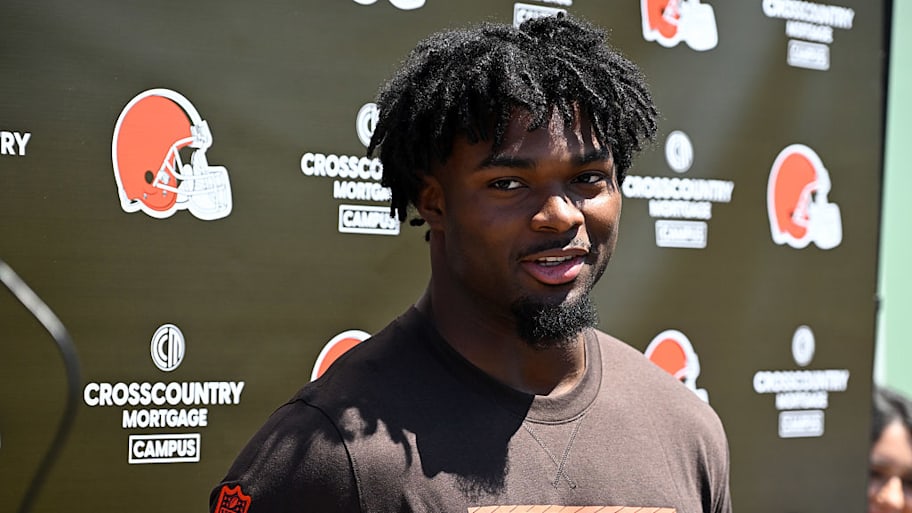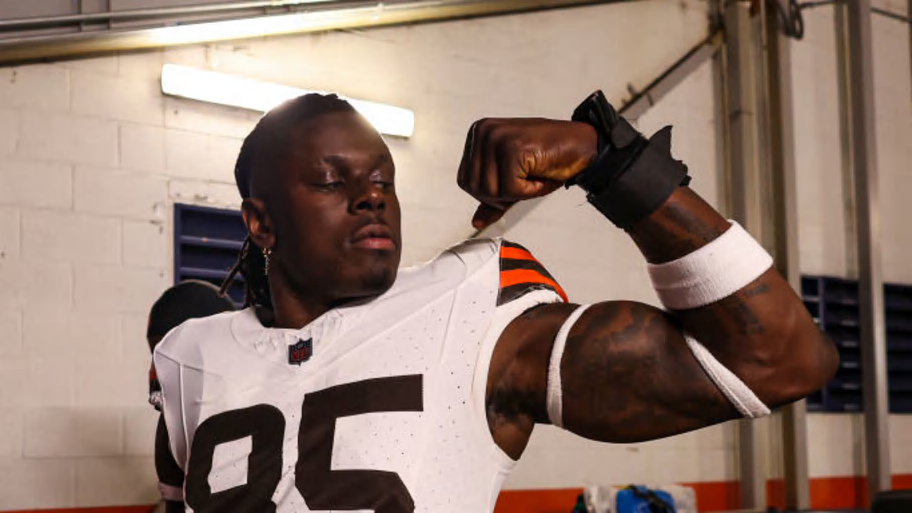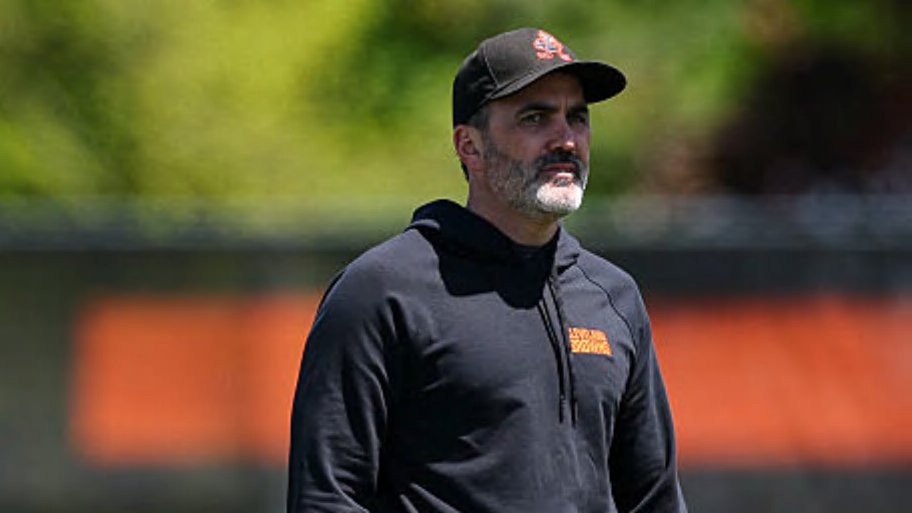
Training camp is right around the corner, and the Cleveland Browns tight end room is settled at the top with David Njoku. But don’t overlook rookie Harold Fannin Jr., who might have a bigger role lined up than expected. While younger veterans Blake Whiteheart and Tre' McKitty are in the mix, Fannin, the Browns’ third-round pick at 67th overall out of Bowling Green, has the athleticism, skill set, and versatility that have him inserted into the TE2 spot heading into the fall.
Fannin arrived in Cleveland without much national fanfare, but those who watched his MAC tape know the kid is the real deal. In his final season at Bowling Green, he caught 117 passes for 1,555 yards and 10 touchdowns, smashing all sorts of records.
He lined up all over the field, from inline to the backfield to the slot. His movement skills, physicality, and ability to create mismatches made him a nightmare for opposing defenses. With the tight end room behind Njoku wide open, Fannin is in a strong position to make an immediate impact as a rookie.
There are three main data points that are being looked at to see Fannin Jr's potential impact this season: Rookie tight end history, the Browns' usage of tight ends in the Stefanski era, and Stefanski's tight end-specific personnel packages. Let's take a look and see what fans can realistically expect from Fannin heading into 2025.

Rookie Tight End History
Tight end isn’t an easy position to break into as a rookie. It requires blocking like a lineman and route-running like a wideout, so most guys take time. Since 2020, 40 tight ends have been drafted between Rounds 2-4. Whether due to injuries or coaching decisions, only 21 of them played at least 15 games in their rookie seasons. Here are the averages of those 21 players:
- 16.2 games
- 27.3 receptions
- 273.3 yards
- 2.29 touchdowns
While there are definitely examples of rookies producing at a high level, such as Sam LaPorta and Pat Freiermuth, the average stat line of a rookie tight end is not usually eye-catching.
The transition from college to the NFL for tight ends is difficult because they have to wear multiple hats. They’re expected to block edge rushers, read complex coverages, and adjust routes on the fly. The learning curve is one of the steepest of any offensive position, which is why coaching stability, scheme fit, and opportunity matter more than draft status. In Cleveland, Fannin can check all three boxes.

Playing Time for Cleveland Tight Ends
When Stefanski arrived in 2020, he leaned hard on multi-tight end sets. That year, Austin Hooper and Harrison Bryant logged over 55% of the team’s offensive snaps, while Njoku was at 38.5%. As the years went on, along with the trade for Deshaun Watson, the offense started to spread out more with fewer heavy sets and fewer tight ends on the field.
Here's a look at the playing time for the top three tight ends for Kevin Stefanski's offense:
While Njoku’s snap share steadily increased over that same span, the TE2 and TE3 roles began to split or shrink. Bryant had the most inconsistent amount of snaps as he filled in for others due to injuries throughout his time with Cleveland. Akins and Whiteheart were used more selectively, often for red zone packages, rotational run blockers, or filling in for the injured Njoku.
With Stefanski expected to be going back to what we saw earlier in his Cleveland career, expect to see more tight ends on the field this season. Since Fannin seems to be the clear-cut TE2, something like a 50% snap share is very much on the table, especially if he earns trust in the blocking department.

Stefanski's Personnel Usage
Before we dive into the numbers, let’s quickly define what each personnel grouping means:
- 11 Personnel = 1 running back, 1 tight end, 3 wide receivers
- 12 Personnel = 1 running back, 2 tight ends, 2 wide receivers
- 13 Personnel = 1 running back, 3 tight ends, 1 wide receiver
These groupings are a simple way to label the offensive alignment on any given play. The more tight ends in the formation, the more likely the offense is leaning toward run-heavy or play-action looks. Here's how Stefanski's formations have shifted over the last five seasons:
There are many factors as to why there has been such a sharp decline in tight end usage over the last five seasons. Between injuries, the departures of Austin Hooper and Harrison Bryant, and the trade for Deshaun Watson, the shift in offensive philosophy makes a ton of sense.
But even with the recent drop in multiple tight end sets, there’s a real chance we see a decent-sized uptick in 2025 with Stefanski going back to his offensive roots. If the Browns land back in the 21–24% range for 12 personnel and hit 4–6% in 13 personnel, Fannin should be on the field quite a bit.
Compared to the rest of the league, Stefanski was top 10 in 12 and 13 personnel usage in his first two seasons. If the offense regains some of its early identity, focused on play-action, zone run looks, and mismatches, then having two tight ends on the field together that can cause problems makes sense. Fannin’s flexibility helps here.
He can catch and move, which allows Stefanski to disguise looks and keep defenses guessing. If the Browns want to keep defenses honest and give their quarterback easier reads, leaning into 12 personnel with a versatile TE2 is a nice option to have.

What to Expect from Fannin in 2025
Unless the Browns decide to add a veteran presence to the room, the TE2 job is Fannin's to lose. Now that the Browns should have at least passable quarterback play, in addition to Stefanski going with heavier sets, Fannin has a chance to make an impact sooner rather than later. Based on the data that was shown, Fannin's 2025 should look something like this:
- 25–30 catches
- 250–325 yards
- 2–3 touchdowns
- Around 500 offensive snaps
For context, those numbers would put him in similar company as recent rookie tight ends like Cole Kmet, Trey McBride, or Jake Ferguson. If Njoku were to miss some time with injuries, Fannin may end up closer to having an impact like Tucker Kraft and Isaiah Likley had during their rookie seasons.
Either way, it’s clear that Fannin not only has the chance to make an impact early, but early and often. The opportunity and scheme fit is clearly there, and the offense is built for a TE2 to matter again. Don’t be surprised if Harold Fannin Jr. ends up being the next breakout rookie to make some noise in Cleveland.
More must-reads:
- Caitlin Clark's true value to be revealed in absence
- Free-agent options for Raiders if DT Christian Wilkins is unavailable
- The '100+ strikeouts in the 2024 MLB season' quiz
Breaking News
Trending News
Customize Your Newsletter
 +
+
Get the latest news and rumors, customized to your favorite sports and teams. Emailed daily. Always free!







